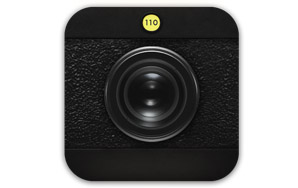Hipstamatic for the People
It's endearing how the detached cynicism with which hipsters confront their surroundings is tempered by a sentimentality for "old" things, namely, these circa 80's photos—and how those compromised photos resembled the inception of photography in the 1840's.
By Jimmy Chen

The etymology of Hipstamatic, the iPhone app which mimics the effect of Holga cameras, is obviously “hipster” due to such demographic’s penchant for both iPhones and photography. Through a combination of different lenses and film, the photos feature artsy aesthetics such as saturated hues, blurriness, over-exposure, and various film distortion originally attributed to Holgas’ inaccuracy and low-fidelity. They boast to “[bring] back the look, feel […] from the past,” which points to a hyper-accelerated sense of time, given that Holga cameras were invented only in the 80’s.
Those bored with the built-in standard set of film and lenses can buy “Hipstapak” sets of specialty film and lenses named after some of the most hipsterish places on earth: Williamsburg, New York; Shibuya, Tokyo, Japan; and Portland, Oregon—each with their own distinct “local” severity and zip-code narcissism (I suspect the Berlin Hipstapak to be next).
It’s endearing how the detached cynicism with which hipsters confront their surroundings is tempered by a sentimentality for “old” things, namely, these circa 80’s photos—and how those compromised photos resembled the inception of photography in the 1840’s. It’s as if we (short of being a hipster, I do have the Hipstamatic app, and must use the first person collective here) are ever-presently grasping into the past—one which had always been aestheticized and never truly experienced—at a more romantically lonely high school or early college time where everything looked like some Anton Corbijn U2 video. MTV taught us that black & white and blurry was deep.
Through flickr and facebook, users are encouraged to “share with your HipstaFriends,” and one soon realizes that the consumer has become the product. Of course, the über-hipsters, those with a more Marxist political spin, are beyond consumerism and cast techy MAC-centric hipsters away as yuppies. (Let us not get into the inextricable overlaps between hipsters and yuppies re: socio-economic entitlement and fiscal agility, only to say that we often define ourselves by who we resent.)
One Hipstamatic testimonial reads “I *love* the photos that come out of this app, it makes just about anything look amazing,” key point being that lack of a photographer’s discretion (subject, composition, light, etc.) is compensated for by superb effects and a passive sense of intrinsic artsyness. In the testimonial, the asterisk-to-emphasis html formatting is purposely not translated—as if they, those two asterisks, were stars in one’s eyes, blinded by digital cosmic radiance, finally in love with how the world looks. ![]()

